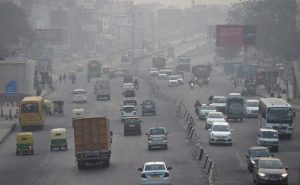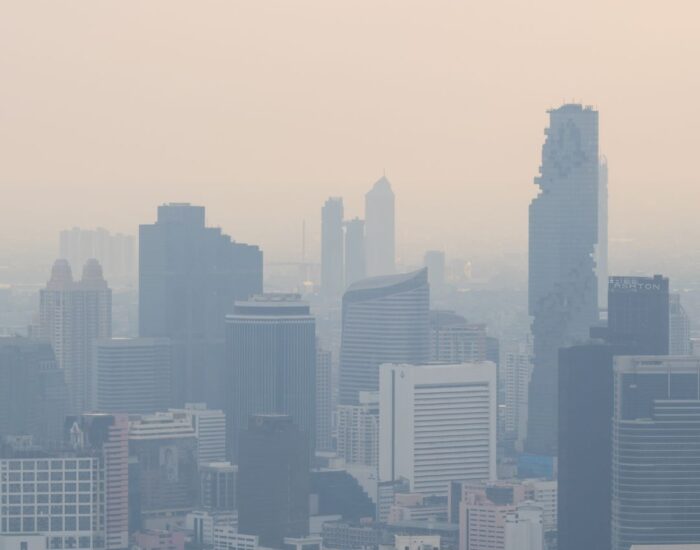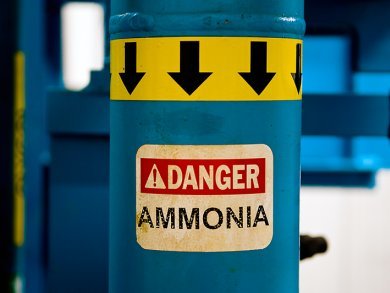Clearing the Air: The Hazards of Welding Fumes and How to Stay Safe
Welding is a common industrial process used to join metal parts together. Although it is a highly efficient process, it also produces welding fumes that can be harmful to human health. Welding fumes are a mixture of metal oxides, gases, and vapors that can be inhaled by welders and other workers in the vicinity. In this blog, we will discuss the dangers of welding fumes and ways to prevent exposure.
Dangers of Welding Fumes:
Welding fumes contain several hazardous substances, such as manganese, lead, nickel, chromium, and cadmium, which can cause both short-term and long-term health effects. Short-term effects can include eye, nose, and throat irritation, dizziness, and nausea. Long-term exposure can lead to more serious health issues such as respiratory problems, lung cancer, and neurological damage.
Preventing Exposure to Welding Fumes:
Welding is a crucial process that involves joining two or more pieces of metal together by heating them to high temperatures. However, the process also produces a lot of hazardous fumes and gases, which can be harmful to the welder’s health. That’s why it’s important to use a welding fume extractor to remove harmful fumes from the air.
A welding fume extractor is a device designed to remove fumes and particles generated during welding, cutting, and grinding operations. It captures and filters the contaminated air, returning clean air into the work environment. Welding fume extractors come in various sizes, shapes, and configurations, and are designed to meet different types of welding applications.
One of the benefits of using a welding fume extractor is that it protects welders from the harmful effects of welding fumes. These fumes can cause serious health problems such as lung cancer, respiratory diseases, and other occupational illnesses. By removing these fumes, the extractor helps to create a safe and healthy work environment for the welder.
Another benefit of using a welding fume extractor is that it improves the quality of the weld. Welding fumes can affect the quality of the weld by depositing contaminants on the surface of the metal. This can lead to weaker welds and increased porosity. By removing the fumes, the welding fume extractor helps to ensure a clean, high-quality weld.
When choosing a welding fume extractor, it’s important to consider the type of welding being done, the size of the work area, and the type of filter needed. Some extractors use disposable filters, while others use reusable filters that can be cleaned and reused. The size of the extractor should be appropriate for the size of the work area to ensure that all fumes are captured and filtered.
A welding fume extractor is an essential tool for any welding operation. It helps to protect the welder’s health and ensures a clean, high-quality weld. When choosing an extractor, it’s important to consider the type of welding being done, the size of the work area, and the type of filter needed. By using a welding fume extractor, welders can work safely and efficiently without inhaling harmful fumes.
The Costly Cloud: How Air Pollution Impacts the Economy
Air pollution, the silent assailant lurking in our atmosphere, poses a grave threat to both public health and the economy. While the immediate impact on human well-being is evident, the long-term repercussions on economic stability and growth are equally concerning. In this blog, we will explore the multifaceted ways in which air pollution adversely affects the economy, underscoring the urgent need for comprehensive action.
Health Costs:
One of the most direct and tangible consequences of air pollution is its detrimental effect on public health. Exposure to harmful pollutants leads to respiratory ailments, cardiovascular diseases, and even premature deaths. As healthcare systems struggle to cope with the increased demand for medical assistance, the accompanying costs skyrocket. These mounting healthcare expenses put a strain on public budgets, leaving less room for investment in vital sectors such as education and infrastructure.
Reduced Labor Productivity:
Unhealthy air quality takes a toll on workforce productivity, thereby hindering economic growth. Employees exposed to high levels of pollutants are more likely to suffer from respiratory problems and allergies, leading to increased absenteeism and decreased productivity. Moreover, studies have shown that air pollution can impair cognitive abilities, diminishing decision-making skills, and overall efficiency. This decline in labor productivity dampens economic output and competitiveness, adversely affecting both businesses and national economies.
Agricultural Productivity:
The impact of air pollution extends far beyond urban centers. Pollutants such as ozone, nitrogen dioxide, and particulate matter harm crops, forests, and ecosystems. Reduced agricultural productivity not only leads to lower yields and food shortages but also causes price hikes in the market. Farmers bear the brunt of this, facing economic losses while trying to adapt to changing environmental conditions. Furthermore, the ripple effects of diminished agricultural output affect food processing industries, leading to job losses and economic instability in rural areas.
Tourism and Recreation Decline:
Clear skies and fresh air are often key factors that attract tourists to a destination. However, areas plagued by air pollution suffer a decline in tourism and recreational activities. Visitors are discouraged from exploring regions with poor air quality, impacting revenue streams for hotels, restaurants, and local businesses. Moreover, outdoor recreational activities, such as hiking, biking, or enjoying parks, become less appealing, leading to a decline in associated industries. The resulting economic downturn further exacerbates the negative cycle of air pollution’s impact.
Environmental Damage and Cleanup Costs:
Air pollution contributes to environmental degradation, including acid rain, smog, and the deterioration of ecosystems. Cleaning up polluted areas, restoring damaged environments, and implementing effective pollution control measures all incur substantial costs. Governments and communities must allocate resources to combat environmental damage caused by air pollution, diverting funds that could be used for infrastructure development or education initiatives.
Regulation and Compliance Costs:
Governments worldwide impose regulations and standards to curb air pollution, requiring industries to invest in pollution control technologies and adjust their production processes. Compliance with these regulations involves significant costs, including the installation of emission control equipment, continuous monitoring systems, and operational changes. While these measures are essential for public health and environmental preservation, the associated expenses impact business profitability and economic growth.
Reputation and Investment:
Regions marred by high levels of air pollution suffer from a tarnished reputation, deterring potential investors. Businesses may hesitate to establish operations in polluted areas due to concerns over employee health, reduced productivity, and negative public perception. The subsequent decline in investment opportunities limits job creation and economic growth in these regions, perpetuating a vicious cycle of stagnation.
Tackling Air Pollution for Sustainable Prosperity:
Air pollution, often underestimated as a mere environmental issue, poses significant threats to the economy. The detrimental effects on public health, labor productivity, agricultural output, tourism, energy consumption, environmental integrity, and investment opportunities underscore the urgency of combatting this invisible menace. Policymakers, businesses, and individuals must prioritize sustainable practices, embrace cleaner technologies, and implement stringent pollution control measures to safeguard public health, enhance productivity, and foster long-term economic prosperity. Only by addressing air pollution comprehensively can we create a healthier, more sustainable future for generations to come.
Clearing the Air: How Wet Scrubbers Neutralize Ammonia Gas
Ammonia is a versatile chemical compound widely used in various industries, including agriculture, refrigeration, and manufacturing. However, its presence in the air can be problematic, leading to health hazards, environmental pollution, and corrosion. This blog explores the hindrance of ammonia in industries and sheds light on how wet scrubbers neutralize ammonia gas, mitigating its adverse effects.
The Hindrance of Ammonia in Industries
Health Risks: Ammonia gas can cause severe health problems when inhaled, such as eye and throat irritation, respiratory issues, and even chemical burns. Workers in industries that handle ammonia, such as fertilizer production plants, refrigeration facilities, and chemical manufacturing units, are particularly at risk. Furthermore, accidental ammonia leaks can affect nearby communities, posing a threat to public health.
Environmental Impact: Ammonia emissions contribute to environmental pollution. When released into the atmosphere, ammonia can react with other pollutants, such as nitrogen oxides, to form particulate matter and ground-level ozone, contributing to smog formation. Ammonia deposition can also disrupt ecosystems and lead to water pollution, harming aquatic life.
Corrosion and Infrastructure Damage: Ammonia is corrosive to many materials, including metals and concrete. In industries where ammonia is present, equipment, pipelines, and structures can suffer damage over time. This corrosion not only compromises the integrity of industrial infrastructure but also increases maintenance costs and reduces operational efficiency.
The Role of Wet Scrubbers in Neutralizing Ammonia Gas
Wet scrubbers are an effective pollution control technology widely employed in industries to reduce harmful emissions. These devices utilize liquid solutions or slurries to remove pollutants from gas streams. When it comes to neutralizing ammonia gas, wet scrubbers offer several advantages:
Absorption: Wet scrubbers use a liquid medium, typically water or a chemical solution, to absorb and dissolve ammonia gas. As the gas passes through the scrubber, it comes into contact with the liquid, which facilitates the transfer of ammonia from the gas phase to the liquid phase.
Chemical Reactions: In some wet scrubbers, the liquid medium contains chemical agents, such as acids or alkalis that react with ammonia to form harmless compounds. For example, in an alkaline wet scrubber, the ammonia reacts with an alkaline solution to produce ammonium hydroxide, which is less hazardous and can be safely disposed of or further processed.
Particulate Removal: Wet scrubbers can also remove particulate matter associated with ammonia emissions. By using a combination of liquid droplets and collection mechanisms, such as impaction or diffusion, wet scrubbers capture both gaseous ammonia and solid particles, effectively reducing emissions.
Benefits of Wet Scrubbers in Ammonia Control
Improved Air Quality: Wet scrubbers significantly reduce ammonia emissions, minimizing the risks to human health and improving air quality in and around industrial facilities. By neutralizing ammonia gas, wet scrubbers play a crucial role in maintaining a safe and healthy work environment.
Environmental Protection: The implementation of wet scrubbers aids in reducing ammonia’s environmental impact. By capturing and neutralizing ammonia emissions, these devices prevent the formation of harmful secondary pollutants, such as particulate matter and ground-level ozone. They also help in curbing ammonia deposition and its subsequent impact on ecosystems and water bodies.
Infrastructure Protection and Cost Savings: Wet scrubbers minimize corrosion caused by ammonia gas, extending the lifespan of industrial infrastructure and reducing maintenance expenses. By preventing damage to equipment and structures, industries can operate more efficiently and avoid costly repairs and replacements. The hindrance posed by ammonia gas in industries is a significant concern due to its health risks, environmental impact, and infrastructure damage. Wet scrubbers offer an effective solution by neutralizing ammonia emissions and capturing harmful particles. Implementing wet scrubbers not only protects workers’ health and improves air quality but also safeguards the environment and preserves valuable industrial infrastructure. As industries strive for sustainable and responsible operations, wet scrubbers play a vital role in mitigating the adverse effects of ammonia gas, fostering a safer and cleaner future.
Shielding Pharmaceutical Excellence and Safety
Introduction:
Pharmaceutical manufacturing is a complex and highly regulated industry that plays a vital role in healthcare. However, one often overlooked aspect of this industry is pharmaceutical dust. Dust particles generated during the manufacturing process can pose serious risks to both product quality and the health and safety of workers. That’s where dust collectors step in as unsung heroes, effectively mitigating these risks and offering numerous benefits to the pharmaceutical industry.
The Dangers of Pharmaceutical Dust:
Pharmaceutical dust consists of fine particles that are generated during various manufacturing activities, such as milling, blending, and granulation. These particles can be hazardous in several ways:
Health Risks: Inhalation of pharmaceutical dust can be harmful to workers, potentially leading to respiratory issues, allergic reactions, and even long-term health problems. Protecting employees from exposure to airborne particles is crucial to ensure their well-being.
The Role of Dust Collectors: Dust collectors are specifically designed to capture and remove airborne dust particles. These devices are integral to maintaining clean and safe environments in pharmaceutical manufacturing facilities.
Enhanced Product Quality: By efficiently removing dust particles, dust collectors minimize the risk of product contamination. This ensures pharmaceutical products’ integrity, purity, and consistency, meeting regulatory requirements and safeguarding patient safety.
Improved Workplace Safety: Dust collectors play a vital role in protecting the health and well-being of employees. By capturing and filtering airborne particles, they reduce the risk of respiratory issues and allergic reactions among workers, promoting a safer and healthier working environment.
Regulatory Compliance: The pharmaceutical industry is subject to strict regulations and guidelines regarding air quality and worker safety. Dust collectors help companies comply with these regulations by effectively controlling dust emissions.
Cost Savings: Implementing a dust collector system can lead to cost savings in the long run. By reducing product contamination and minimizing the likelihood of costly product recalls, companies can protect their reputation and avoid financial losses. Additionally, improved worker health and safety reduce absenteeism, enhance productivity, and lower healthcare expenses. Pharmaceutical dust may be an often overlooked aspect of the manufacturing process, but its impact on product quality, worker safety, and regulatory compliance cannot be understated. Dust collectors act as unsung heroes, diligently capturing and removing airborne particles, thereby minimizing contamination risks, ensuring workplace safety, and promoting regulatory compliance. Investing in dust collector systems is a proactive step that pharmaceutical companies can take to protect their products, employees, and bottom line. By leveraging these systems, the industry can achieve higher product quality, reduce the likelihood of accidents and product recalls, and create a safer working environment.
Transport Air Pollution
Transport Air Pollution
Vehicular pollution is the introduction of harmful materials into the environment by motor vehicles. These are the materials, known as pollutants, have several bad effects on human health and the ecosystem.
Air pollution is caused by the solid and liquid particles and certain gases that are suspended in the air. These particles and gases can be come from car and truck exhaust, factories, dust, pollen, mold spores, volcanoes and wildfires. The solid and liquid particles suspended in our air is called aerosols.
Environmental Effects of Transport
The environmental effects of transport are significant because transport is a major user of energy, and burns most of the world’s petroleum. This creates of air pollution, including nitrous oxides and particulates, and is a significant contributor to global warming through the emission of carbon dioxide.

Transport Air Pollution
Admittedly, the air transport is extremely polluting but so are cars. Air traffic represents less than 2-3% of the global CO2 emissions whereas road traffic accounts for around 10% of these direct emissions. Still, plane remains among the most polluting means of transport, together with cars.
The movements of pollutants in the atmosphere is caused by transport, dispersion, and deposition. Transport are movement caused by a time averaged wind flows. Dispersion results from the local turbulence, that is, motions that last less than the time used to average the transport.
Transport Air Pollution
Transport also leads to releases of pollutants, which can be spread beyond the reach of transport networks. They can be contributing to background concentrations of particulate matter, ozone and nitrogen dioxide, affecting people, plants and animals.
The transportation sector generates the largest share of greenhouse gas emissions. Greenhouse gas emissions from transportation primarily comes from burning fossil fuel for our cars, trucks, ships, trains, and planes.
Passenger vehicles are the major pollution contributor, producing significant amounts of nitrogen oxides, carbon monoxide, and other pollution. In 2013, transportation contributed more than half of the carbon monoxide and nitrogen oxides, and almost a quarter of the hydrocarbons emitted into our air.
Rail transportation emits about 0.2 pounds of greenhouse gases per passenger mile (55 g/km) when each car is filled with 50 passengers
Reduce Pollution from Vehicles and Engines
- Drive less.
- Drive wise.
- Choose fuel efficient vehicles.
- Don’t idle.
- Optimize home deliveries.
- Use efficient lawn and gardening equipment.
Effects of Transport Air Pollution
Vehicle emissions contribute to the formation of ground level ozone (smog), which can be trigger health problems such as an aggravated asthma, reduced lung capacity, and increased susceptibility to respiratory illnesses, including pneumonia and bronchitis.
Total emissions are generally a function of the emission factors of each transport mode than their level of activity, which has implied a variety of impacts on the environment. These impacts fall within three categories,
-
Direct impacts:
The immediate consequences of transport activities on the environment where the cause and effect relationship are generally clear and well understood. For instance, noise and carbon monoxide emissions are known to have a direct harmful effects.
-
Indirect impacts:
The secondary effects of transport activities on environmental systems. They are often to the higher consequence than direct impacts, but the involved relationships are often misunderstood and more challenging to establish. For instance, particulates, which are mostly the outcome of incomplete combustion in an internal combustion engine, are indirectly linked with a respiratory and cardiovascular problems since they contribute, among other factors, to such a conditions.
-
Cumulative impacts:
The additive, multiplicative or synergetic consequences of transport activities. They consider as the varied effects of direct and indirect impacts on an ecosystem, which are often unpredictable. Climate changes, with complex causes and consequences, is the cumulative impact of several natural and anthropogenic factors, in which transportation plays a role. The shares of transportation in global, CO2 emissions is increasing. 22% of global CO2 emissions are attributed to the transport sectors, with this share is around 25% for advanced economies such as the United States.
https://www.apzem.com/india/products/product-categories.html




